| Umělec 2007/2 >> Landings: A sharp cut | Просмотр всех номеров | ||||||||||||
|
|||||||||||||
Landings: A sharp cutUmělec 2007/201.02.2007 Marisol Rodríguez | travel | en cs de es |
|||||||||||||
|
Perhaps, after all,
America never has been discovered. I myself would say that it had merely been detected. Oscar Wilde, 1891. The city of Santiago de los Caballeros is lost in the middle of the Central Sierra, Dominican Republic, hidden among hills and mountains, banana palms and flanboyanes. The population is divided between half-castes and mulatos, no one here is black (instead they call themselves “morenos”). Every little piece of African influence is carefully disguised under a thick veil of euphemisms that almost erase every genetic trace; for women, heritage becomes a course, their abundant hair that falls in natural rasta curls, is straightened, tied and treated with chemicals until every little curl disappears—you can't go to a job interview or go to work with your hair au-natural. Latin idiosyncrasy, specifically Central America, the Caribbean and North America (Mexico) is determined at its root by the past. The Conquest, which started at the end of the XV century in the majority of the continent, included, as in every conquest, a strong cultural attack during which many, and in some cases almost all of the original traditions of the pre-Hispanic peoples were lost; their religion and cosmogonic conception as a central aspect in the life of the communities and as the main axis in every town’s position in their own universe disappeared. The consequences of this unconscious emptiness are self evident up to the present: the mistrust of others, and even of oneself, the “malinchismo,” and the certainty of entire populations that national progress depends not on their collective effort, but from an external strength—some omnipotent engine represented in most cases by the United States or, when it defects, by the European Union. From the point of view of this article, the path of that kind of prejudice is subtle, but very well-known, not only by the circles that govern art on the continent, but also by a public that tends to think that American and European art production is not only superior, but infinitely more vast and significant than the Latin American. The other extreme, the absurdly nationalistic standpoint, believes that “national” art must be cultivated despite its inconsistencies; that calls for an over-valuation and—in spite of proclaiming the urgency of finding new local talents—perpetuates the same old artists whom, paradoxically enough, very rarely achieve success in their own countries in the first place; recognition always comes from abroad, and once it’s obtained, it drags acceptance and absolute commendation from the local sphere. It is within this context that the third of the ten proposed landings editions has been inaugurated - a project curated by Joan Duran, Belizean artist and diplomat (born in Barcelona, 1947) who has been fighting for the cultural development of his country and the region for more than three decades. In landings, Duran intends to upturn each and every one of these aforementioned prejudices, and at the same time gradually introduce, the evolution of a collective of emerging artists—chosen and orchestrated by the curator—coming from Belize, Mexico, Honduras, Trinidad and Tobago, the Dominican Republic, Aruba, Costa Rica, Cuba, Nicaragua, Haiti, Guatemala, El Salvador and Panama. Originally conceived in Belize, landings aspires to build hybrids out of contemporary cultures and identities under a spirit of collaboration, celebration, curiosity and exploration. landings dwells and grows both in regional and international contexts, transmitting a multiplicity of messages through its investigatory format, which supports the realization of works that are mostly in situ. landings 1: Conkal, Yucatan, México. landings 2: Mérida, México. landings 3: Santiago de los Caballeros, Dominican Republic. landings 4: San José, Costa Rica. landings 5: New York, USA. landings 6: Washington, DC, USA. landings 7 and 8: La Habana, Cuba. landings 9: Barcelona, Spain. landings 10: Badajoz, Spain. With one to eight month intervals between each edition, landings is a marathon project in which every one of the works is thought of within a very wide context that includes the peculiarities of each artist's surroundings and the specific characteristics of every single exhibition location where the works would be presented. For example, landings 2, January 2006 was carried out in a former elementary school, rescued from abandonment to house the works of these young artists aged 22 to 37 years. It was impossible to ignore the element of crude irony and denunciation of Latin America’s educational institutions. This was ever-present in Anyelmaidelin Calzadilla's La Oportunidad de Negar, Samuel + Alexis' 781006/771129, and Vanessa Rivero's 20milen20años. Many other works were similarly evocative, such as Memory Machine by Gema Rios, a candy vending machine modified to offer to its client-spectator little bags containing school-uniform shirts with the coats-of-arms of several institutions, socks, skirts and other clothing items that most every-one that went to elementary school in Mexico had to wear. In this case, the site is the Centro Leon in Santiago de los Caballeros, Dominican Republic, a first class cultural center, immersed in a city almost totally permeated by reggaeton music, bling bling and the cult of "pimped-out" cars. Its temporary exhibition hall has been completely painted black and in its center rises a 25 square meter wooden box housing the videobox, a space that projects a video loop of 20 videos lasting from twelve seconds to a little more than a minute, by ten artists from the same group. Seventeen artworks around this videobox, almost were on the floor with minimum lighting and all of them with a leitmotif that, like the previous editions of landings, is presented as a sort of axis that leads the conceptual direction of the exhibition as a whole. In this instance, such works are the recurrence of objects from our routine domestic life; from Home by Vanessa Rivero; the seeds from which Alerta Roja by Lucia Madriz was made; a Soviet-made radio—a Cuban relic, witness of revolutions, progress, economic blockages and decadence—in Comunicado by Anyelmaidelin Calzadilla; or even in Timpanos by Adán Vallecillo. Nevertheless, beyond such obvious approximation, this exhibit seems to turn around obsessions, phobias and anguishes developed in common atmospheres, presented in a subtle but doubtlessly disturbing way. In this sense, we can interpret the work of Yasser Musa, co-lab-oration # 1: Mouses (Brad and Domingo), consisting of 300 little wooden mice hand-carved by Domingo and Brad—friends of Yasser currently incarcerated in a Belizean prison. The disposition of the mice is based on a series of nightmares suffered by Musa during which hundreds of mice entered through the windows of his room, climbed up his bed and invaded every corner, leaving him unable to do anything except stare at them. This work is one of the most aggressive towards the spectator since its poor lighting and the peculiar shining finish of every mouse give the impression that instead of looking at an art exhibit, it's some sort of frozen scene, extremely real, bound to return to its active state at any moment. Also outstanding is the work entitled Home by Vanessa Rivero, in which she combines elements that, though anachronisms, still maintain specific symbolisms in the Americas. A “matrimonial” sized mattress covered by a perfectly white sheet with embroidery at its center, an imago type representing both sexes, masculine and feminine, that are bound to share the bed, below this you can read "home." However, the embroidery is not made with the typical cotton thread and certainly does not contain any of the traditional flourishes of the ancient designs made in the feminine circles of every family before the marriage of one of its female members; as a matter of fact, the image is made out of cushion pins, an ambiguous element that might represent both the complete dedication of the female in such marriages (the same dedication the artist practices without regard to a countless number of stings in his hands) and the aggressive demands that were and still are placed on the preservation of a “pure” sexuality until marriage. The pristine white sheet is no doubt another element that brings forth a double-standard in expecting this purity from women, but not from men. It is not my intention to describe every work, but as I have done it with the two previous and I shall continue with the next, because I think that together they complete a thematic cycle in which the spectator goes through a gradation in the intensity of his experience, due to the nature and even the placing of the works; with co-lab-oration No.1: Mouses (Brad and Domingo) the spectator experiences a very aggressive impact, a blow that forces him to imagine any number of unpleasant scenes, or even some pleasant ones, and to think about the nature of the artist’s perturbed motivation. Nevertheless, this aggressive shock turns into surprise and uncertainty upon viewing the five following works, which present well clear questions and challenges for the viewer–in Bang-Bang, Gema Rios presents an armchair upholstered in red, with two embroidered guns surrounded by golden floristries; in the seat, the spectator is ordered to HAVE A REST, when he sits, a circuit that chooses a random sentence is activated, curiously enough, some spectators feel as if these sentences were their own, for example, “You deserve a rest”, but do not assign them the almost poetic strength of these. The next is Encuentro de Poderes by Patricia Castillo, a Dominican artist that uses hundreds of rectangular water-filled plastic bags—the same ones that are sold throughout the streets of the country, an inexpensive solution to the incessant heat— and she uses them as a canvas onto which she projects a moving picture of waves from the ceiling, adding sound associated with the ebb and flow of the tides on the Dominican coast; with this piece, Patricia achieves a perfect combination between visual, auditory, and even tactile experience, given the emotions that are created by combining the three modes of representation. The feeling of comfort the spectator experiences when walking in front of this piece is undeniable, and it is because one can try to interpret the idea behind the confining of the water, the little bags, the plastic, or even try to read this as an ecological cry of warning or any of a thousand more explanations; however, it'll become a fruitless experiment because perhaps the most important aspect achieved here is something very rarely seen in a contemporary - emerging, conceptual, or whatever label you want to attach to it - art exhibit, here the spectator has both an aesthetic experience and an artistic one, in this piece the semantic and pragmatic fields are combined in an incredibly spectator-friendly way; the artist brings the spectator to connect emotionally with the art piece in such a non-post modernist way that it is frightening. And it appears that landings asks, and not only asks but challenges anyone who dares to answer: Is it possible for actual art to combine the energy of modernism with the cynicism of postmodernism? Is it possible to overcome the titles, the prejudices, and the historical traumas acquired and fomented for centuries? Is it possible to assemble a collective of artists with such diverse backgrounds and contexts and cause them to diverge in the essential points of a common artistic and aesthetic experience? landings does not pretend to answer these questions nor to give universal truths, this almost military campaign has as one of its goals to demonstrate that Latin American art does not gyrate only around the same beaten paths and subjects, and confirms that its manufacture is impeccable, at the level of any prestigious museum or collection, however, it may be that after so many tiring months for both artists and curator, the most gratifying thing was when the exhibition hall finally opened to one of the most diverse audiences ever seen in a gallery –from janitors to old, local museum curators – the same ones that even before seeing the exhibition were already disqualifying it for being so pretentious- including cooks, local hairdressers, visual art specialists, architects, waiters and even a representative of the prestigious Leon family, a vivacious octogenarian not used to conceptual art but absolutely fascinated with the exhibit- each one reacted to the works by truly reflecting upon the meanings and the experiences, finding themselves fascinated by the fact that they could be so surprised and shaken from the still waters in which they usually move, by an exhibition they could not believe was from local manufacture. This is landings, a cut made by a clean knife, exact and deadly and definitive.
01.02.2007
Рекомендуемые статьи
|
|||||||||||||
|
04.02.2020 10:17
Letošní 50. ročník Art Basel přilákal celkem 93 000 návštěvníků a sběratelů z 80 zemí světa. 290 prémiových galerií představilo umělecká díla od počátku 20. století až po současnost. Hlavní sektor přehlídky, tradičně v prvním patře výstavního prostoru, představil 232 předních galerií z celého světa nabízející umění nejvyšší kvality. Veletrh ukázal vzestupný trend prodeje prostřednictvím galerií jak soukromým sbírkám, tak i institucím. Kromě hlavního veletrhu stály za návštěvu i ty přidružené: Volta, Liste a Photo Basel, k tomu doprovodné programy a výstavy v místních institucích, které kvalitou daleko přesahují hranice města tj. Kunsthalle Basel, Kunstmuseum, Tinguely muzeum nebo Fondation Beyeler.
|







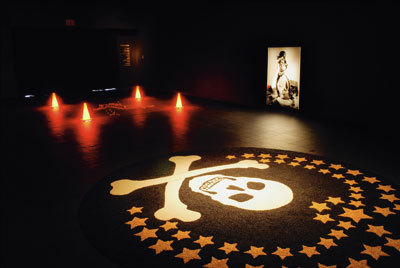














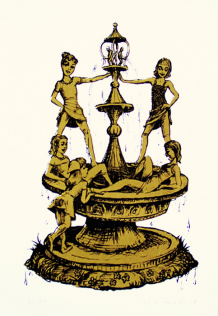




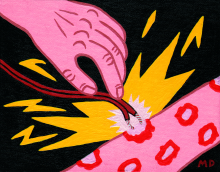
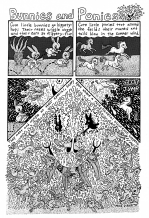
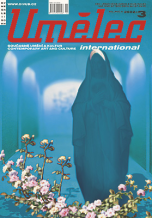
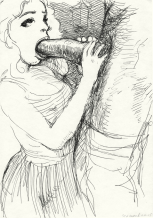


 We Are Rising National Gallery For You! Go to Kyjov by Krásná Lípa no.37.
We Are Rising National Gallery For You! Go to Kyjov by Krásná Lípa no.37.
Комментарии
Статья не была прокомментированаДобавить новый комментарий